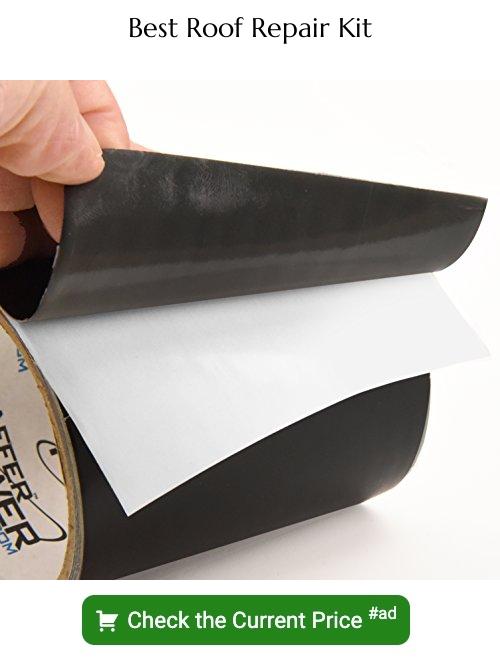Last updated on
In this article, you will learn the typical timeline for filing a roof damage claim and the factors that can affect this period. When it comes to filing a claim for roof damage, the timeframe can vary depending on the insurance policy and the cause of damage. Most insurance policies require that a claim be filed within a reasonable time from the date the damage occurred, commonly within one year. However, it is critical to review your specific insurance policy, as some policies may dictate a different period, which could be as short as 30 days for certain types of damage. Certain events, such as natural disasters, can sometimes lead to adjusted claim periods due to the volume of claims or extended damage assessment times. In cases where the damage is not immediately apparent, the time to file a claim may begin from the date the damage is discovered, rather than when it occurred. Policyholders are advised to file a claim as soon as possible after damage is observed to avoid any disputes over the timing and to expedite repairs. Delaying a claim can lead to additional damage and possibly jeopardize the claim’s approval. After a severe weather event, it’s beneficial to have a professional roof inspection even if damage isn’t visible, as this can help identify issues and support a potential claim. To ensure that you are within the appropriate window to file a claim, document all damage promptly and maintain records of any inspections or repairs. Contacting your insurer immediately can also provide you with specific guidelines pertaining to your policy and the nature of the roof damage.
Key takeaways:
- File a claim within a reasonable time (typically one year).
- Some policies may require filing within 30 days for certain damage.
- Promptly file to avoid disputes and expedite repairs.
- Get a professional roof inspection even if damage isn’t visible.
- Document all damage, contact insurer, and maintain records.
Understanding the Importance of Timely Claims

Acting swiftly to file a roof damage claim is vital due to the constraints of insurance policies which typically set deadlines for reporting. Insurance companies generally require policyholders to file claims within a specific time frame, known as the “claim filing window.” This period can vary considerably depending on the terms of your policy and may range from 30 days to a year after the damage occurs.
Prompt action ensures claims processing starts without delay, allowing for potentially smoother negotiations with your insurer and quicker repair timelines. Adhering to these deadlines can also shield you from potential disputes over whether the damage was a result of a covered event or due to neglect over time.
Another crucial reason for timely claims is mitigating further damage. Insurers may deny claims if policyholders fail to take reasonable steps to protect their property following initial damage, arguing that prolonged exposure worsened the condition.
In essence, understanding and respecting the time constraints of roof damage claims is a fundamental aspect of protecting your investment and minimizing out-of-pocket expenses related to repairs.
Steps to Take Immediately After an Incident
Inspect the damage as soon as it is safe to do so, documenting all affected areas with photos or video for a visual record.
Contact your insurance company to report the incident and determine your coverage specifics.
Secure a copy of your insurance policy to understand your rights and obligations.
Mitigate further damage by making temporary repairs or arranging for a professional to cover exposed areas, keeping receipts for all related expenses.
Finally, compile a list of personal property damaged in the event and store all evidence and documents in a secure, organized manner to facilitate the claims process.
Insurance Coverage for Roof Damage From Trees and Other Causes
Most homeowner’s insurance policies typically cover roof damage resulting from unpreventable, sudden natural disasters, such as falling trees, fire, or severe weather events. It’s essential to review your policy’s declarations page for specifics on coverage limits and exclusions. Generally, damage from age, wear and tear, or poor maintenance may not be covered.
Here are key points regarding insurance coverage for roof damage due to various causes:
- Falling Trees: If a healthy tree topples onto your roof during a storm, your insurance is likely to cover the repairs. Conversely, if the tree was rotting and not maintained, your claim could be denied.
- Storm Damage: Hail, windstorms, and rain often prompt justified insurance claims. After a storm, document the damage immediately to facilitate the claims process.
- Fire: Damage from fire is usually covered, whether it originates from your home or a neighboring property.
- Vandalism: If your roof suffers damage due to malicious or intentional acts, your policy should cover the repairs.
It’s crucial to understand your policy’s specific terms, including deductibles and coverage limits for various types of roof damage. In the event of damage, contact your insurer promptly to ensure compliance with any time constraints for claims.
The Process of Filing a Hail Damage Insurance Claim
When hail hits, it can wreak havoc on your roofing materials. To file a claim successfully, start with these points:
- Document the Damage: As soon as it’s safe, take photos or videos of the hailstones, along with the devastation they’ve caused.
- Review Your Policy: Assess your insurance documents to understand the specifics of hail damage coverage.
- Prompt Notification: Notify your insurance company immediately. Delaying can complicate the claims process.
- Professional Inspection: Engage a licensed roofer to provide a detailed inspection report.
- Claim Submission: Include your documentation and the inspection report when submitting your claim.
- Claims Adjuster Appointment: Cooperate with the insurance adjuster’s schedule for their assessment.
- Follow-Up: Keep tabs on the claim’s progress and respond promptly to requests for additional information.
Each step is crucial; missing one can affect the outcome of your claim. Always keep records of all correspondence and transactions for your reference. Act quickly but carefully to ensure your claim is strong and clear.
Navigating the 5 Steps to File a Roof Damage Insurance Claim
1. Document the Damage: Take clear, time-stamped photos or videos of the roof damage from multiple angles to provide concrete evidence for your claim. Note the date of occurrence if known, and any surrounding circumstances that could have led to the damage.
2. Review Your Policy: Understand your coverage by carefully reviewing your insurance policy. Look for details regarding covered perils, such as wind or hail, and be aware of any specific clauses or exclusions that might affect your claim.
3. Contact Your Insurance Company: Reach out to your insurer as soon as possible to notify them of the damage. They will provide you with a claim number and explain the next steps, including the deadline to submit your claim, which often ranges from 30 days to one year after the damage occurs.
4. Prepare for the Adjuster’s Visit: The insurance company will send an adjuster to inspect the damage. Ensure you have all necessary documentation on hand, including your evidence of damage and any receipts for repairs that were necessary to prevent further damage.
5. Keep Records of the Claims Process: Maintain detailed records of all communications with your insurance company, including emails, calls, and the name of any representatives you speak to. This documentation can be crucial if there are any disputes or follow-up questions regarding your claim.
Related
- Red Roof Inn Council Bluffs: Comprehensive Hotel Review and Information Guide
- Tin Roof Kansas City: Your Ultimate Guide to Nightlife and Entertainment
- How to Remove Birds from Inside Roof: Safe and Effective Methods
- Tin Roof Fort Lauderdale: Your Ultimate Local Business Review
- Up on the Roof Anderson SC: Comprehensive Restaurant Review and Guide

